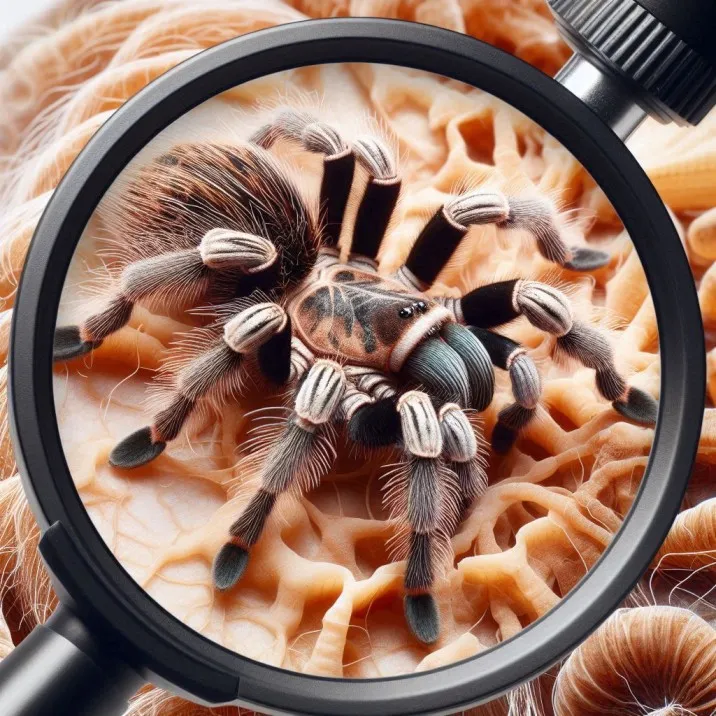7 Must-Know Facts about Tarantula Care
Tarantulas, with their impressive size and fascinating behaviors, have become popular pets. However, caring for a tarantula is a significant responsibility. These eight-legged creatures have specific needs that, if unmet, can lead to health problems or a shortened lifespan. This guide provides seven essential facts to help you become a responsible tarantula owner. Understanding these points will ensure your tarantula thrives in its enclosure, leading to a rewarding experience for both you and your pet. From habitat setup to feeding and handling, we’ll cover everything you need to know to provide the best possible care for your tarantula. Remember, research and preparation are key to a successful and enjoyable experience with these amazing arachnids.
Choosing Your Tarantula Breed
The first step in tarantula ownership is choosing the right breed. Different species have varying temperaments, sizes, and care requirements. Some tarantulas are known for their docile nature, making them better suited for beginners, while others can be more defensive. Researching the characteristics of different tarantula species is crucial. Consider factors such as your experience level, the space you have available, and the type of environment you can provide. Popular beginner-friendly tarantulas include the Chilean Rose Hair tarantula and the Pinktoe tarantula, both known for their relatively calm dispositions and manageable care needs. Careful selection ensures you can comfortably and safely care for your new pet.
Size and Temperament
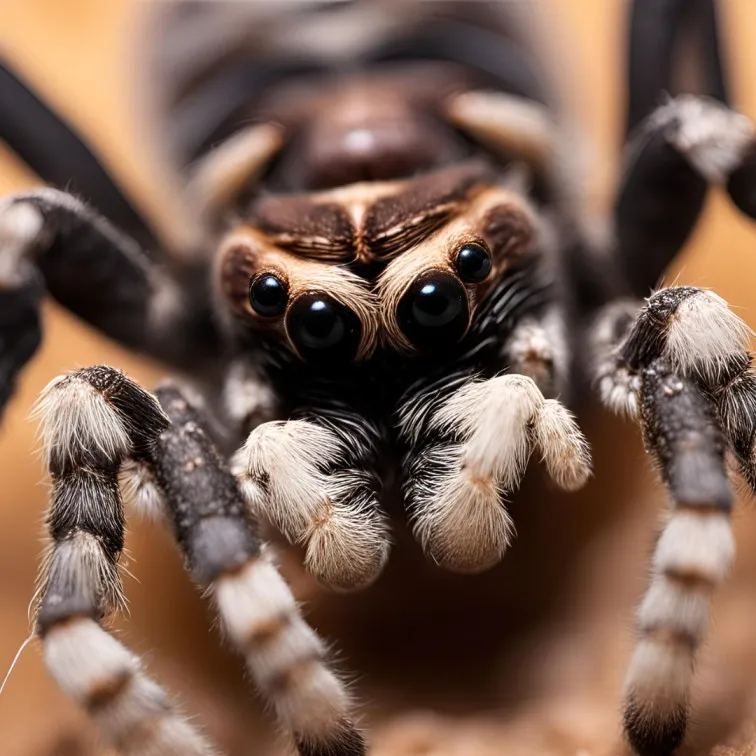
Tarantula size varies widely, with some species reaching a leg span of over 10 inches. When choosing a tarantula, consider the adult size and plan accordingly for an appropriately sized enclosure. Temperament also plays a significant role in your choice. Some tarantulas are more prone to defensive behaviors like flicking urticating hairs or biting, while others are more docile and tolerate handling. Research the specific species’ temperament to align with your comfort level and experience. Understanding both the size and temperament of a tarantula is crucial for creating a safe and enjoyable ownership experience. Prioritizing a species that matches your lifestyle and experience ensures a positive relationship between you and your pet.
Habitat Essentials for Your Tarantula
Creating the right habitat is vital for your tarantula’s well-being. The enclosure must provide a secure and comfortable environment that mimics its natural habitat. This includes appropriate temperature, humidity, and substrate. Neglecting these factors can lead to stress, health issues, and a shortened lifespan. Proper habitat setup involves choosing the right enclosure size, substrate type, decorations, and maintaining the correct temperature and humidity levels. By carefully attending to these habitat essentials, you create a thriving environment where your tarantula can flourish.
Enclosure Size and Setup
The size of the enclosure directly impacts your tarantula’s comfort and well-being. Generally, a good rule is to provide an enclosure that is at least twice as wide as the tarantula’s leg span, and the height should be sufficient for the tarantula to move around without difficulty. Consider whether the tarantula is terrestrial, arboreal, or fossorial, as this influences the type of enclosure needed. Terrestrial species thrive in wider enclosures with more floor space, arboreal species need height for climbing, and fossorial tarantulas require deep substrate for burrowing. Ensure the enclosure has a secure lid to prevent escape and adequate ventilation to maintain air quality and prevent mold growth. Proper setup includes appropriate placement of water dishes and hiding spots to create a stimulating and secure environment for your pet.
Substrate and Decorations
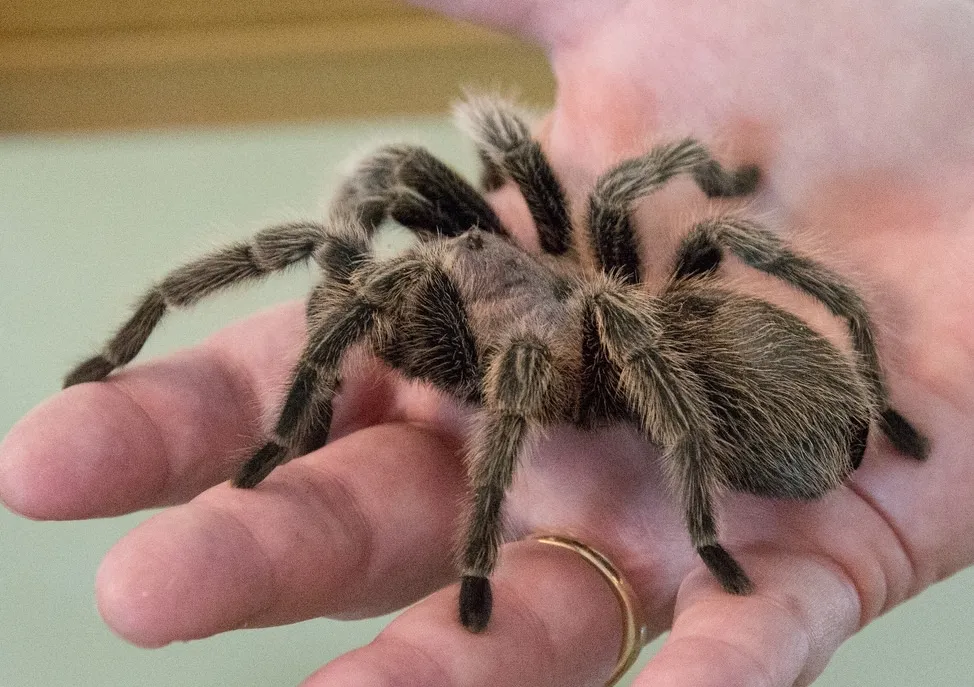
The substrate provides a comfortable surface for your tarantula and helps regulate humidity. Options include coconut fiber, peat moss, or a mix of the two. The choice depends on the species and their needs; some prefer drier substrates, while others need higher humidity. The substrate should be deep enough to allow burrowing for fossorial species. Decorations like cork bark, artificial plants, and hides offer enrichment and security. These elements help the tarantula feel safe and reduce stress. Arrange the decorations to create a natural-looking environment that mimics the tarantula’s natural habitat. Regularly clean and replace the substrate to maintain a healthy environment and prevent the buildup of bacteria and mold.
Temperature and Humidity
Maintaining the correct temperature and humidity is crucial for your tarantula’s health. Most species thrive in temperatures between 75 and 85 degrees Fahrenheit. Use a thermometer to monitor the temperature within the enclosure. Humidity levels vary based on the species; some require higher humidity, while others prefer drier conditions. Use a hygrometer to measure humidity levels, and adjust accordingly. Misting the enclosure with water can help maintain humidity, but avoid over-misting, which can lead to mold and other problems. Providing a heat source like a heat mat can help maintain temperature, but always ensure it is placed on the side of the enclosure, not directly underneath, to prevent overheating. Consistent monitoring and adjustments ensure the habitat meets the tarantula’s needs.
Feeding Your Tarantula
Proper feeding is essential for your tarantula’s health and growth. Providing the right diet, in the correct amounts, ensures your pet receives the necessary nutrients to thrive. Tarantulas are opportunistic predators, and their dietary needs vary depending on their size and species. Overfeeding can lead to health problems, while underfeeding can hinder growth. Understanding the specific dietary requirements of your tarantula is vital to maintaining a healthy pet. This includes knowing what to feed, how often to feed, and how to provide access to fresh water.
What Tarantulas Eat

Tarantulas primarily feed on insects such as crickets, mealworms, and roaches. The size of the prey should match the size of the tarantula; the general rule is that the prey should be no larger than the tarantula’s abdomen. Some tarantula keepers occasionally offer pre-killed prey to avoid any risk of injury to the tarantula. Supplementing the diet with calcium and vitamin supplements is generally not necessary if the tarantula is eating a varied diet of insects. The nutritional value of the prey is essential; always feed insects that have been properly gut-loaded (fed nutritious food) before offering them to your tarantula. Variety in the diet ensures that the tarantula gets the necessary range of nutrients.
Feeding Frequency
The frequency of feeding depends on the tarantula’s age, size, and metabolism. Juvenile tarantulas require more frequent feeding, typically every few days, while adult tarantulas can be fed once or twice a week, sometimes even less often. Observe your tarantula’s behavior to gauge its appetite; if it consistently refuses food, it may be preparing to molt. Remove any uneaten prey within 24 hours to prevent stress and potential injury to the tarantula. Monitoring your tarantula’s abdomen size can also help determine if it is being fed appropriately; a healthy abdomen is typically rounded but not overly large. Adjust the feeding schedule based on these observations to ensure optimal health and growth.
Watering Your Tarantula
Providing fresh water is essential for tarantulas. Always have a shallow water dish available in the enclosure. The water dish should be small enough to prevent the tarantula from drowning and easily accessible. Replace the water frequently, at least once a week, or more often if it becomes soiled. Ensure the water dish is clean and free of debris. For some species, particularly those from drier environments, misting the enclosure can provide additional moisture. Never use tap water directly; it is important to use dechlorinated water or bottled spring water. Adequate hydration is crucial to the tarantula’s health and helps facilitate molting.
Handling and Safety
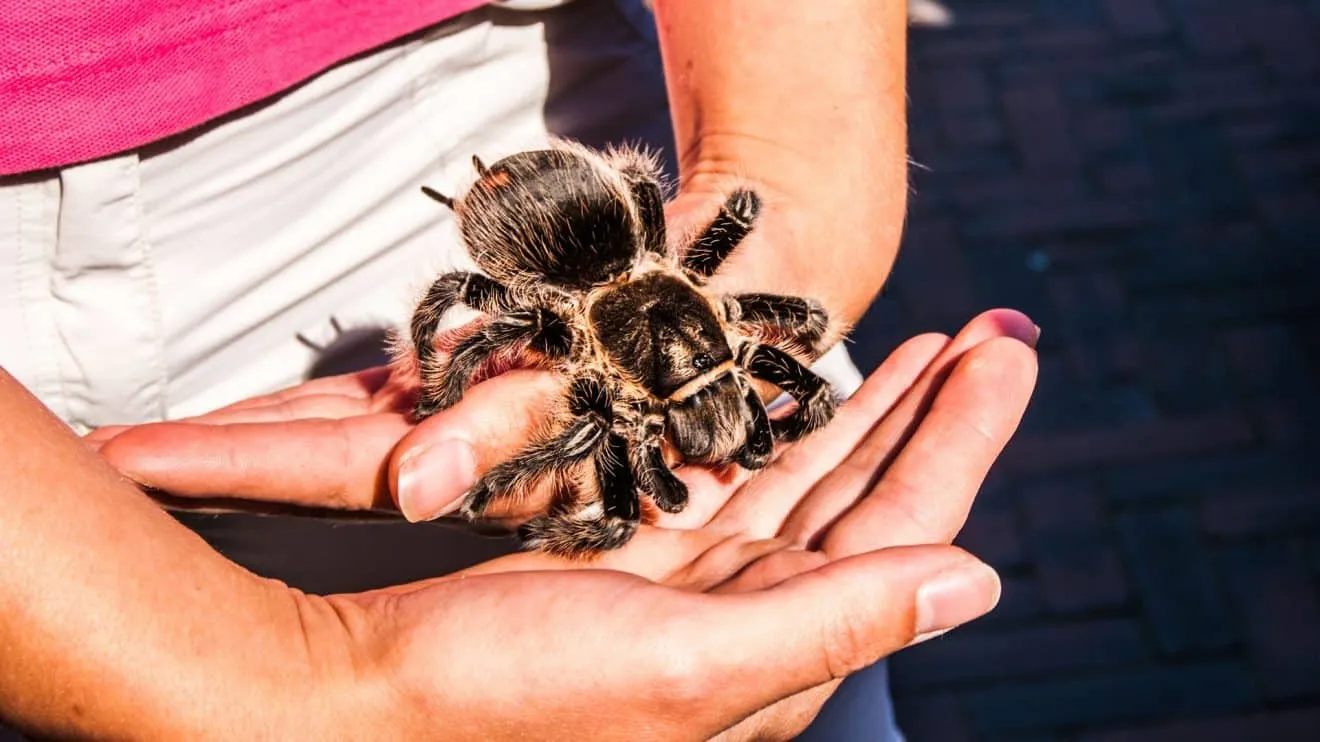
Handling tarantulas should be approached with caution. While some species are docile, others can be defensive and may bite or flick urticating hairs (tiny irritating hairs). Understanding the potential risks and implementing safe handling practices is crucial for your safety and the well-being of your pet. Handling should be minimized, especially for beginners, and should only be done when necessary. Prioritize the safety of both yourself and the tarantula. This means knowing when to handle, how to handle, and how to avoid potentially dangerous situations.
Safe Handling Techniques
If you choose to handle your tarantula, do so with extreme care and a calm demeanor. Always approach the tarantula slowly and avoid sudden movements. Encourage the tarantula to walk onto your hand rather than picking it up. Handle the tarantula close to a soft surface, such as a bed or the floor, in case it falls. Avoid handling after feeding, as the tarantula may be more vulnerable. Wash your hands thoroughly before and after handling. Never handle a tarantula if you are tired or distracted. Always remember that the tarantula’s safety is paramount. If you are unsure or uncomfortable, it’s best to avoid handling altogether.
Recognizing Signs of Stress
Tarantulas can exhibit signs of stress when they are uncomfortable or feel threatened. Understanding these signs allows you to prevent unnecessary handling or environmental stressors. Common signs of stress include a defensive posture, such as rearing up on their back legs, exposing fangs, or flicking urticating hairs. Other signs include hiding, refusing food, and rapid movement within the enclosure. If your tarantula displays these behaviors, it’s best to leave it alone and reassess its enclosure for any potential issues. Regularly observing your tarantula’s behavior will help you recognize these signs early and take necessary steps to ensure your pet’s well-being.
Tarantula Health and Common Issues
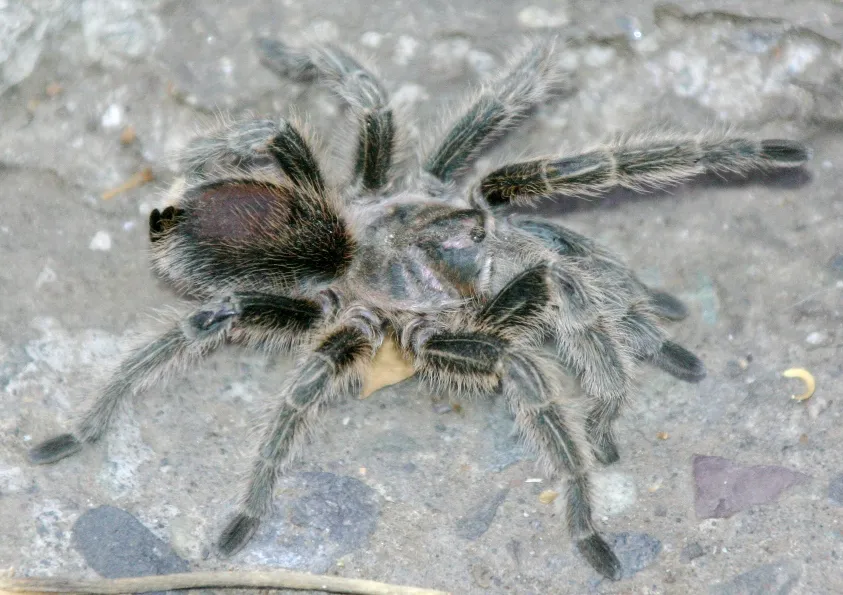
Like any pet, tarantulas can experience health issues. Recognizing common problems and understanding how to address them is essential for responsible tarantula ownership. Regular observation of your tarantula and its enclosure is crucial to detect any signs of illness or distress. By staying vigilant, you can quickly identify and address health issues, leading to a longer and healthier life for your tarantula. Common problems include issues related to molting, parasites, and environmental factors.
Molting and Growth
Molting is a natural process where tarantulas shed their exoskeleton to grow. During molting, the tarantula becomes vulnerable. Avoid handling your tarantula during this time. Provide adequate humidity and a safe, undisturbed environment. Signs of an impending molt include loss of appetite, lethargy, and a darkening of the abdomen. After molting, the tarantula will be soft and vulnerable for several days. During this time, do not feed it until its fangs have hardened. Observing the molting process and providing the necessary conditions ensures the health and growth of your tarantula.
Identifying and Treating Common Problems
Common health issues include mites, fungal infections, and injuries. Mites can infest the tarantula and substrate, causing irritation. Treat mite infestations by replacing the substrate and using mite control products designed for reptiles or arachnids. Fungal infections can occur in environments with high humidity and poor ventilation. Improve ventilation and reduce humidity to prevent fungal growth. Injuries can occur during handling or from prey. Seek advice from a veterinarian experienced in exotic animals if you notice any injuries that don’t heal. Preventative care, such as maintaining a clean and appropriate environment, is the best way to minimize health problems.
Tarantula Lifespan and Commitment

Tarantulas can live for many years, with some species living for over 20 years. Owning a tarantula is a long-term commitment, and it’s essential to consider the lifespan of the species you choose. The longevity of these pets requires consistent care, including regular feeding, habitat maintenance, and health monitoring. Understanding the commitment involved allows you to provide a stable and healthy environment for your tarantula throughout its life. Responsible tarantula ownership involves a deep understanding of the animal’s needs and a willingness to provide the necessary care over an extended period. This commitment is critical for the well-being and happiness of your tarantula.
